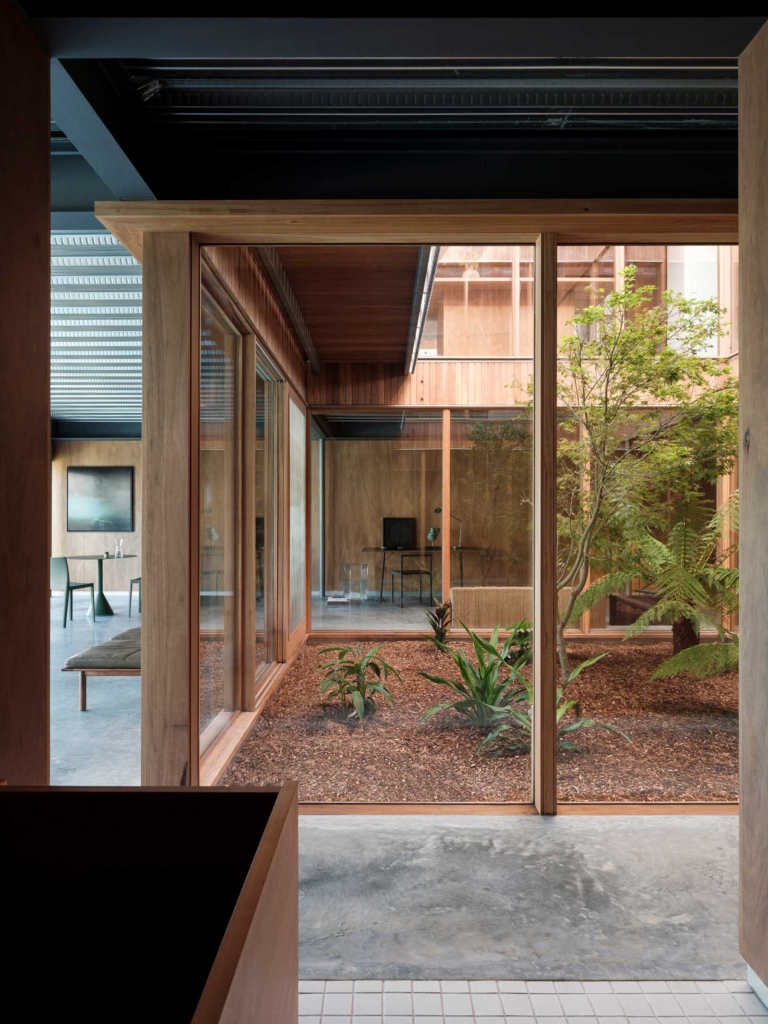
A Discreet Timber Bach – Sandy Bay House by Stevens Lawson
Described by Stevens Lawson Architects as “a small yet perfectly formed home”, Sandy Bay House sits discreetly among the vegetation on a steep site on Waiheke Island, east of Auckland. Relatively inscrutable on approach, behind the façade a warm, timber-lined interior is oriented to capture views across Oneroa’s Sandy Bay.
The exterior is defined by a series of non-orthogonal angles that give the form an organic quality that is reminiscent of the rock formations on the cliffs and coastline below. Sited so that the building steps down in line with the fall of the site, the home reads as a single volume from the front. The closed face gives little indication of the nature of what lies within – a single window through which the magnificent view can be glimpsed offering the only hint. Clad in timber, the natural weathering acts as a physical reminder of the coastal climate and its impact upon the building, while creating a dark and shadowy exterior that settles unobtrusively amongst the landscape.
Stepping inside, one discovers cabin-like interior spaces, with timber lining emphasising a sheltered sense of refuge. Designed for a young family, the three-bedroom home is small yet, through angled, bisecting wall and ceiling planes and the extension of the living space out onto a protected external deck, the home makes efficient use of space. Rather than relying on an expansive footprint, the Sandy Bay House focuses instead on the quality of the experience (of both the site and the architecture) that is created for the inhabitants. The consistent use of timber throughout the home creates a restful sense of coherence and continuity and complements the natural beauty of the surrounding landscape. Meanwhile, the home’s angular and formal relationships throughout the design contribute to a sense of intrigue.
The exterior is defined by a series of non-orthogonal angles that give the form an organic quality that is reminiscent of the rock formations on the cliffs and coastline below.
Towards the centre of the living space, the ceiling pops up to permit an elevated window that brings surprising shafts of light penetrating into the interior. Animating the interior with warmth and drama, the light causes the timber to glow softly and adds another link to the natural world outside. With light cast from above, the sense of space is enhanced by a perceived increase in the volume of the interior. Light, thus, is key to the design’s ability to maximise the space available and to provide a family home that is small but perfectly formed, enhancing inhabitants’ lives through simple yet effective means.
In its materiality, simplicity and modest size, the Sandy Bay House speaks to the values and lifestyle of the simple traditional bach. Yet the project is undoubtedly a contemporary interpretation, through which the architects offer a response that is both robust and sensitive to the landscape of Waiheke Island.




















